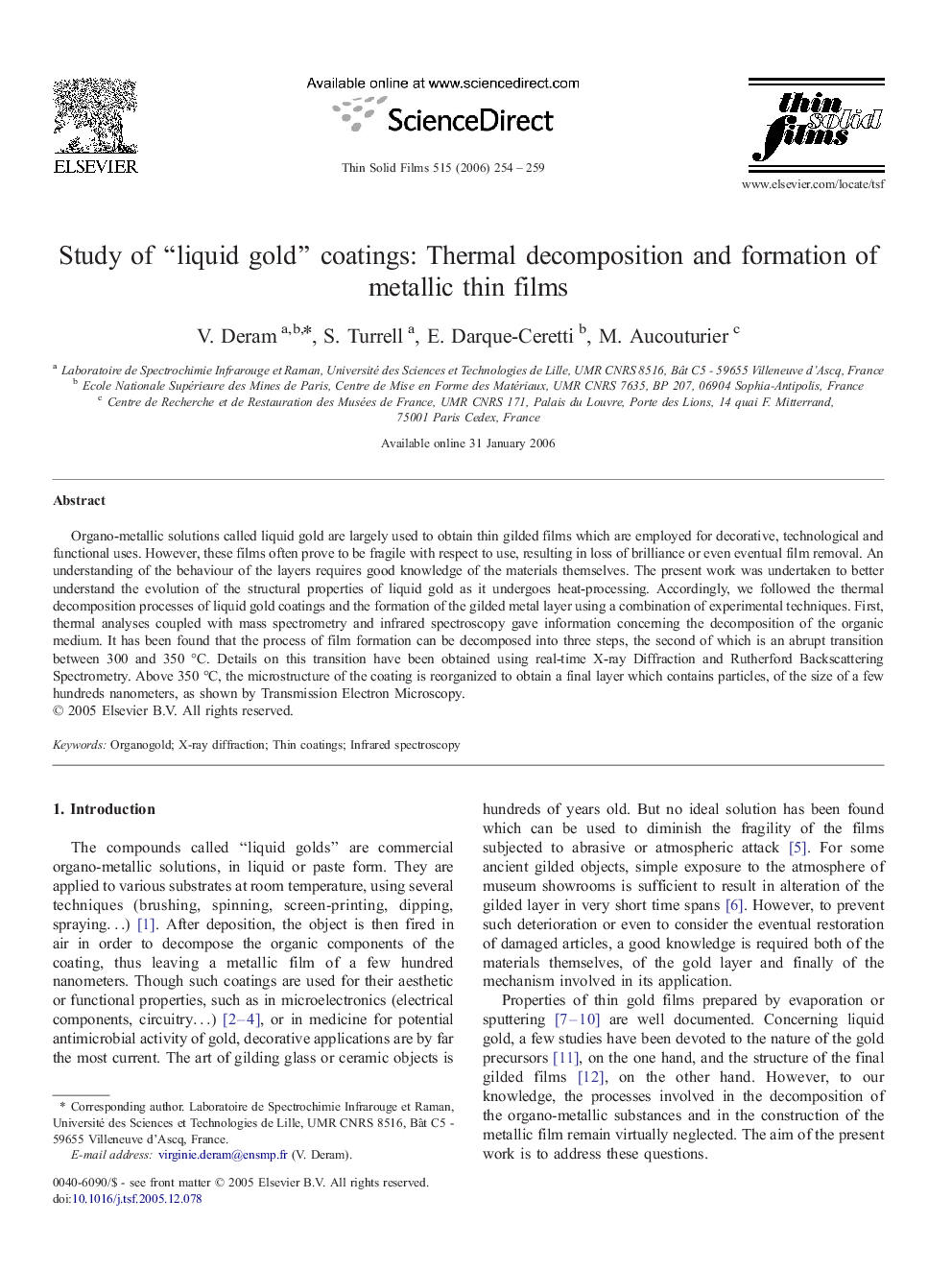| Article ID | Journal | Published Year | Pages | File Type |
|---|---|---|---|---|
| 1676731 | Thin Solid Films | 2006 | 6 Pages |
Organo-metallic solutions called liquid gold are largely used to obtain thin gilded films which are employed for decorative, technological and functional uses. However, these films often prove to be fragile with respect to use, resulting in loss of brilliance or even eventual film removal. An understanding of the behaviour of the layers requires good knowledge of the materials themselves. The present work was undertaken to better understand the evolution of the structural properties of liquid gold as it undergoes heat-processing. Accordingly, we followed the thermal decomposition processes of liquid gold coatings and the formation of the gilded metal layer using a combination of experimental techniques. First, thermal analyses coupled with mass spectrometry and infrared spectroscopy gave information concerning the decomposition of the organic medium. It has been found that the process of film formation can be decomposed into three steps, the second of which is an abrupt transition between 300 and 350 °C. Details on this transition have been obtained using real-time X-ray Diffraction and Rutherford Backscattering Spectrometry. Above 350 °C, the microstructure of the coating is reorganized to obtain a final layer which contains particles, of the size of a few hundreds nanometers, as shown by Transmission Electron Microscopy.
